Sociologists from the Kyiv International Institute of Sociology (KMIS) have used a regression model to make an estimate of how many people in Ukraine’s occupied regions would vote in favor of joining Russia if a real referendum would be held instead of the show Russia is orchestrating based on real polls of pro-Russian secession sentiments in the region.
They used two polls from 2014 and one from 2021-2022 to interpolate the results that one would be likely to see if a real referendum on joining Russia was held in Ukraine’s occupied areas, finding that, as in 2014, an overwhelming majority would be in favor of remaining a part of Ukraine.
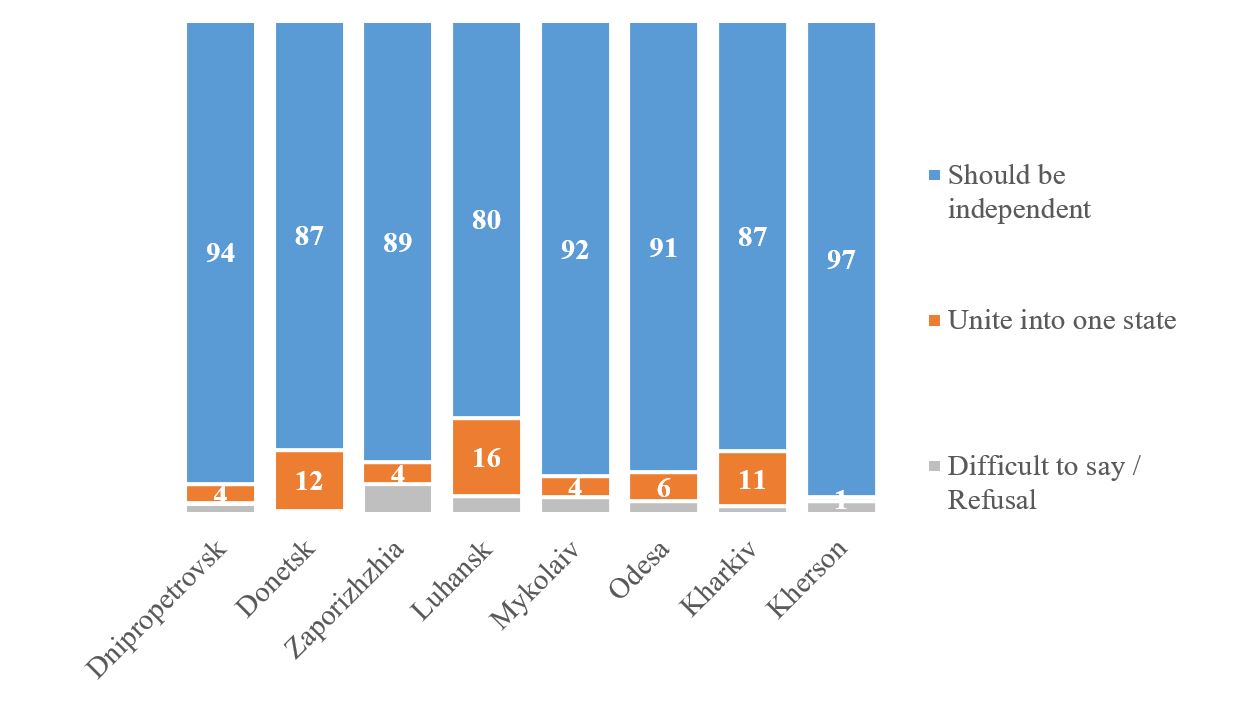
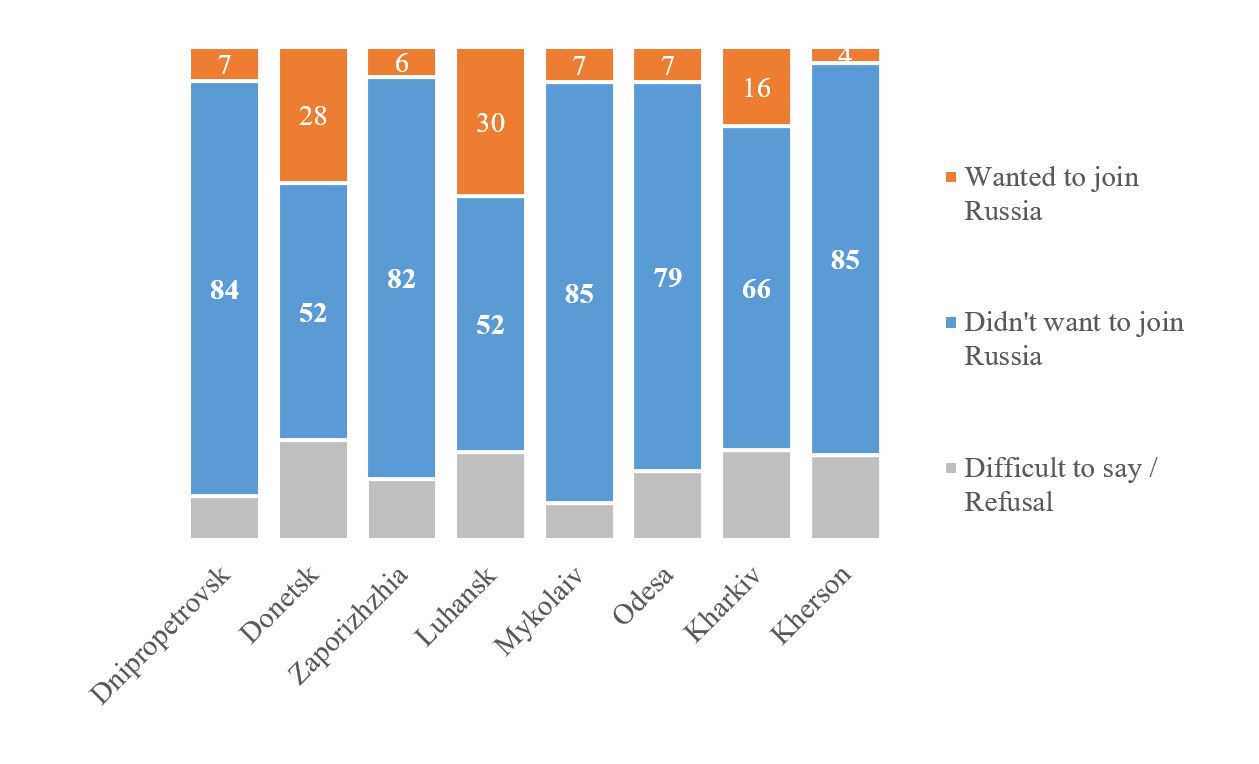
The first two graphs, from April 2014, were made in all the territories of the southeast after the Euromaidan revolution. They were made, as KMIS notes, in the most “difficult (and anti-Ukrainian periods,” information-wise: after the Euromaidan revolution sent president Viktor Yanukovych fleeing to Russia, Russian-backed rallies urging for Russia to “introduce troops” were popping up in various south-Ukrainian cities in what Russia would later call the “Russian spring” (it ultimately failed).
“Among other things, the respondents were asked the standard question of KMIS “How would you like to see Ukraine’s relations with Russia?”, which can be used to calculate the % of those who see Ukraine and Russia as independent states, as well as the % of those who want to unite them into one state. Although this question is not directly equivalent to support for secession, it is highly correlated with it (correlation coefficient 0.95) and is actually a fairly adequate measure of separatist moods,” KMIS notes.
It notes that in this difficult time, even in the most anti-Ukrainian Oblasts, the majority of residents were in favor of remaining as part of Ukraine. 12%, 16%, and 11% of Ukrainians in Donetsk, Luhansk, and Kharkiv oblasts respectively answered they wanted Ukraine to unite with Russia. Answering the question if they wanted only their oblast to join Russia, 28%, 30%, and 16% answered positively, respectively.
What residents of southeastern Ukraine thought about Ukraine-Russia relations prior to Russia’s February 2022 invasion
Pooling together polls from February 2021, November 2021, early February 2022, KMIS shows what residents of the same southeastern oblasts (sans occupied territories of Luhansk and Donetsk) were thinking about Russia-Ukraine relations and finds that, again, an absolute majority is against joining Russia.
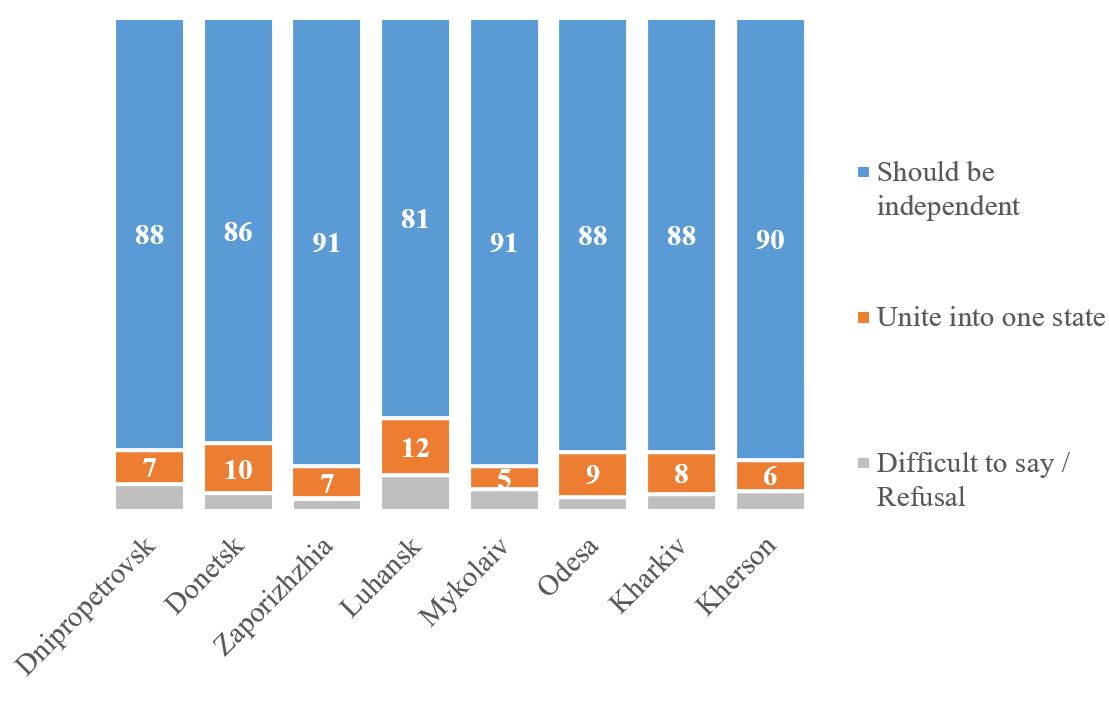
The sociologists used a regression model to estimate what the real support of the local population of southeastern Ukraine is to join Russia and found that in all regions, an overwhelming majority would choose to stay a part of Ukraine. In the most anti-Ukrainian oblasts, Donetsk, Luhansk, and Kharkiv, 81%, 78%, and 85% of the population would choose to remain a part of Ukraine, respectively.
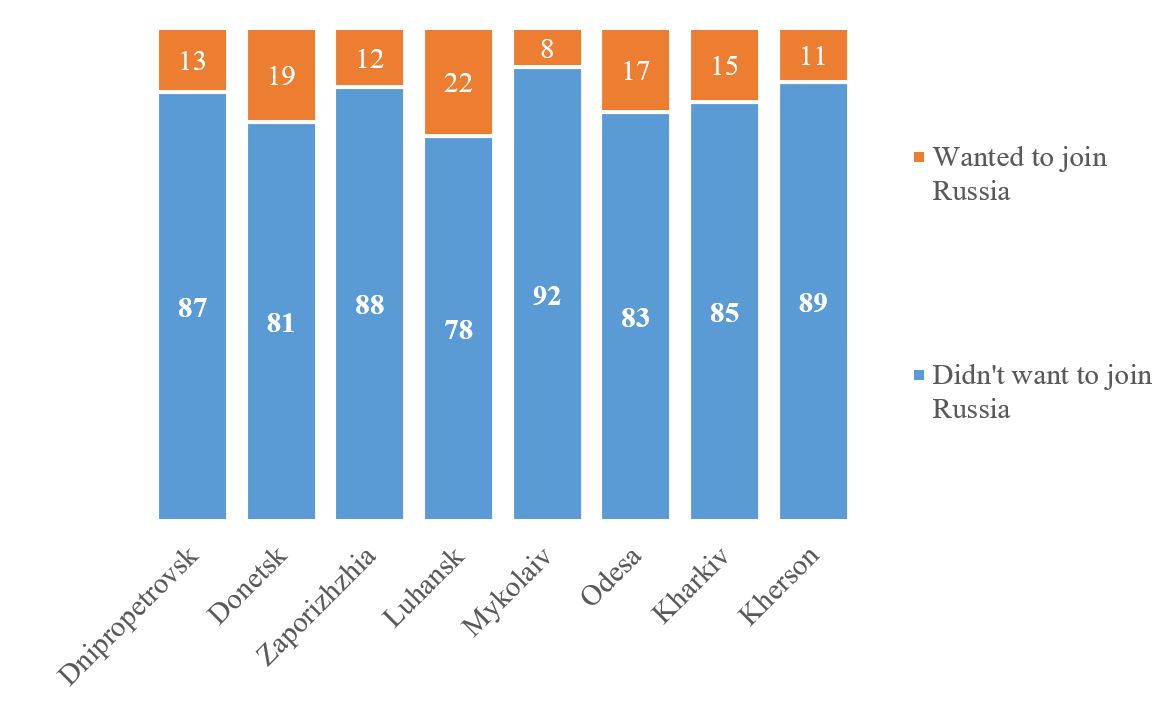
KMIS notes that this level of support disproves the hypothesis that now these regions are more in favor of joining Russia because the pro-Ukrainian population has left. “For example, we can assume as a thought experiment that 60% of the population left the territory of Kherson oblast and only pro-Ukrainian citizens left. Then in the oblast among those who remained, the share of supporters of unification with Russia would be still only 15% against 75% of those who are on the side of Ukraine,” KMIS wrote, referring to the poll from Graph 3.
Russia’s pseudo-referendum show in the Ukrainian territories it occupies started on 23 September and is to continue until 27 September. “Voting” teams accompanied by armed soldiers attend people’s homes and invite them to place a mark on “ballots” lacking unique identification numbers with no privacy.
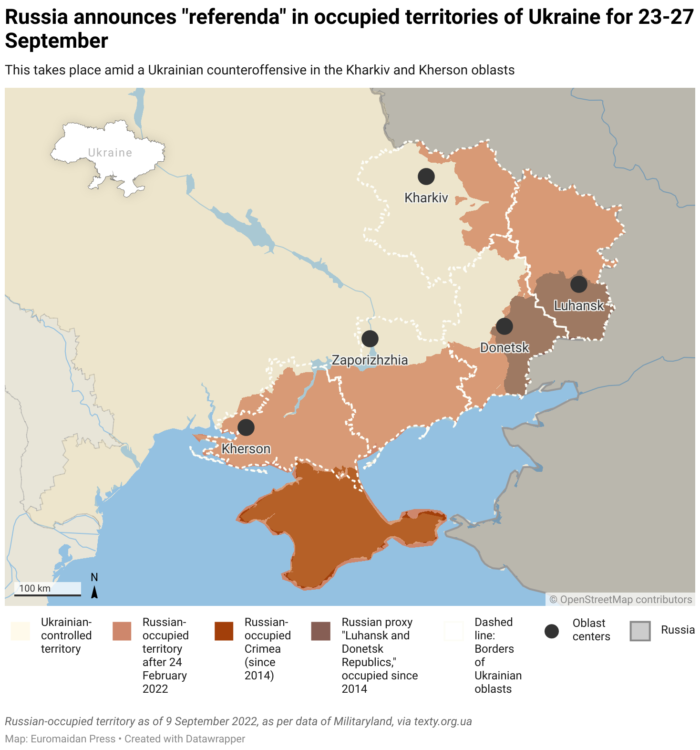
Related:
- Pseudo-referenda show on joining Russia starts in occupied Ukraine: as it happens
- Western media again fall for Kremlin myth of “Ukrainian separatism”
- Ukraine publishes video proving Kremlin directed separatism in eastern Ukraine and Crimea


